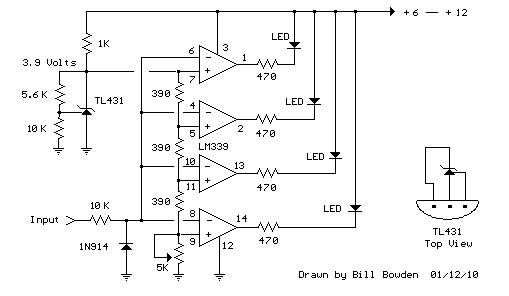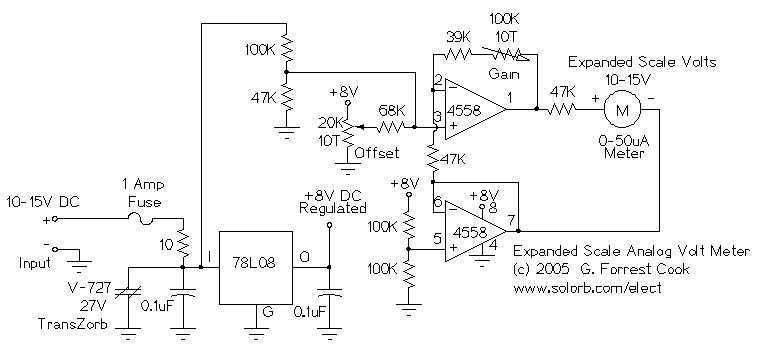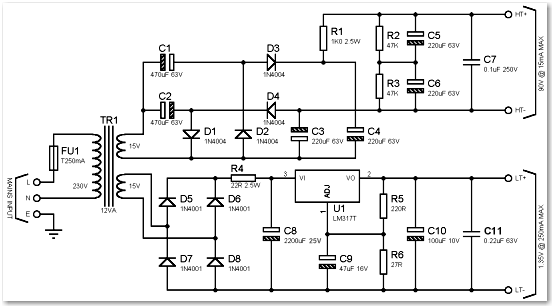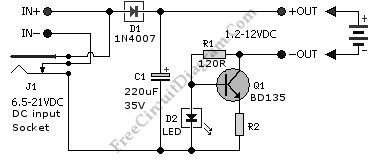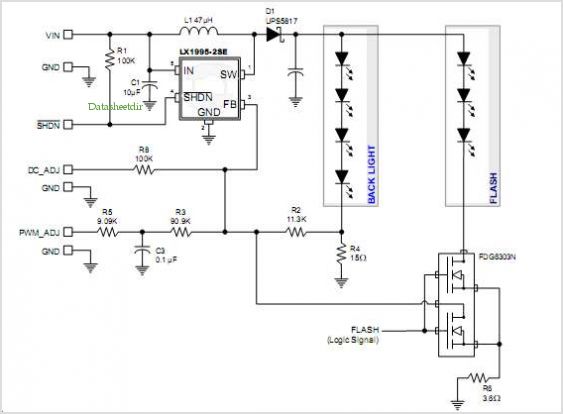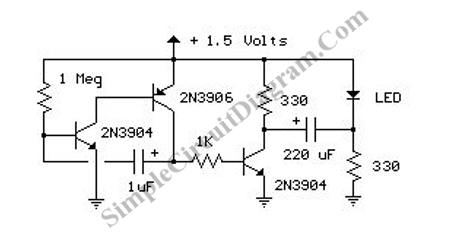
1.5V battery powers white-LED driver
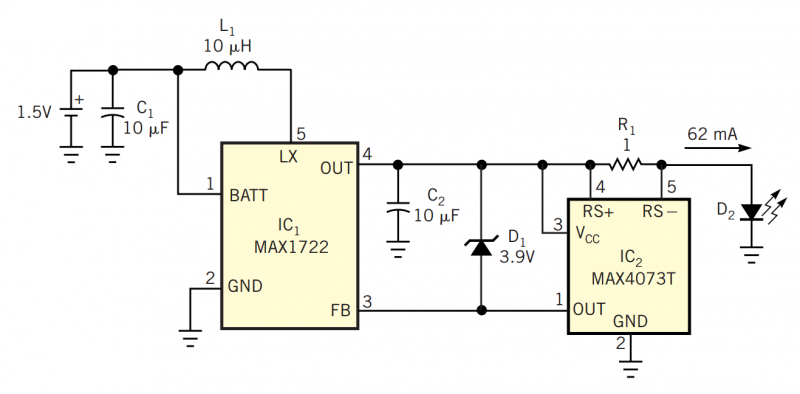
Although white LEDs are common in a variety of lighting applications, their 3 to 4V forward-voltage drop makes low-voltage applications challenging. Charge pumps and other ICs are available for driving white LEDs, but they generally don't work with the low supply voltage of 1.5V in single-cell-battery applications. The low-voltage circuit of Figure 1 provides a current-regulated output suitable for driving white LEDs. The boost converter, IC1, can supply load currents to 62 mA with input voltages as low as 1.2V, making it suitable for use with a 1.5V, single-cell battery.
The described circuit employs a boost converter configuration to effectively drive white LEDs from a low-voltage source, specifically a single-cell battery rated at 1.5V. The boost converter, designated as IC1, is responsible for stepping up the input voltage to a level sufficient to overcome the forward voltage drop of the white LEDs, which typically ranges from 3V to 4V.
The circuit operates by regulating the output current, which is critical for LED applications to ensure consistent brightness and prevent thermal runaway. The current regulation is achieved through feedback mechanisms within the boost converter that monitor the output current and adjust the duty cycle of the converter to maintain the desired output level. This is particularly important in applications where the load may vary, ensuring that the LEDs receive a stable current regardless of changes in input voltage or load conditions.
The IC1 boost converter is selected for its capability to operate efficiently at low input voltages, with the ability to function from as low as 1.2V. This allows the circuit to effectively utilize the battery's energy, maximizing the operational time of the LED lighting system. The circuit design also incorporates necessary components such as inductors, capacitors, and diodes, which are crucial for the boost operation and smoothing the output current.
In addition, the circuit may include protective features such as overcurrent protection and thermal shutdown to enhance reliability and safety during operation. The overall design provides a compact and efficient solution for driving white LEDs in low-voltage applications, making it ideal for portable devices or battery-operated lighting systems.Although white LEDs are common in a variety of lighting applications, their 3 to 4V forward-voltage drop makes low-voltage applications challenging. Charge pumps and other ICs are available for driving white LEDs, but they generally don`t work with the low supply voltage of 1.5V in single-cell-battery applications.
The low-voltage circuit of Figure 1 provides a current-regulated output suitable for driving white LEDs. The boost converter, IC1, can supply load currents to 62 mA with input voltages as low as 1.2V, making it suitable for use with a 1.5V, single-cell battery.
🔗 External reference
The described circuit employs a boost converter configuration to effectively drive white LEDs from a low-voltage source, specifically a single-cell battery rated at 1.5V. The boost converter, designated as IC1, is responsible for stepping up the input voltage to a level sufficient to overcome the forward voltage drop of the white LEDs, which typically ranges from 3V to 4V.
The circuit operates by regulating the output current, which is critical for LED applications to ensure consistent brightness and prevent thermal runaway. The current regulation is achieved through feedback mechanisms within the boost converter that monitor the output current and adjust the duty cycle of the converter to maintain the desired output level. This is particularly important in applications where the load may vary, ensuring that the LEDs receive a stable current regardless of changes in input voltage or load conditions.
The IC1 boost converter is selected for its capability to operate efficiently at low input voltages, with the ability to function from as low as 1.2V. This allows the circuit to effectively utilize the battery's energy, maximizing the operational time of the LED lighting system. The circuit design also incorporates necessary components such as inductors, capacitors, and diodes, which are crucial for the boost operation and smoothing the output current.
In addition, the circuit may include protective features such as overcurrent protection and thermal shutdown to enhance reliability and safety during operation. The overall design provides a compact and efficient solution for driving white LEDs in low-voltage applications, making it ideal for portable devices or battery-operated lighting systems.Although white LEDs are common in a variety of lighting applications, their 3 to 4V forward-voltage drop makes low-voltage applications challenging. Charge pumps and other ICs are available for driving white LEDs, but they generally don`t work with the low supply voltage of 1.5V in single-cell-battery applications.
The low-voltage circuit of Figure 1 provides a current-regulated output suitable for driving white LEDs. The boost converter, IC1, can supply load currents to 62 mA with input voltages as low as 1.2V, making it suitable for use with a 1.5V, single-cell battery.
🔗 External reference
Warning: include(partials/cookie-banner.php): Failed to open stream: Permission denied in /var/www/html/nextgr/view-circuit.php on line 713
Warning: include(): Failed opening 'partials/cookie-banner.php' for inclusion (include_path='.:/usr/share/php') in /var/www/html/nextgr/view-circuit.php on line 713
